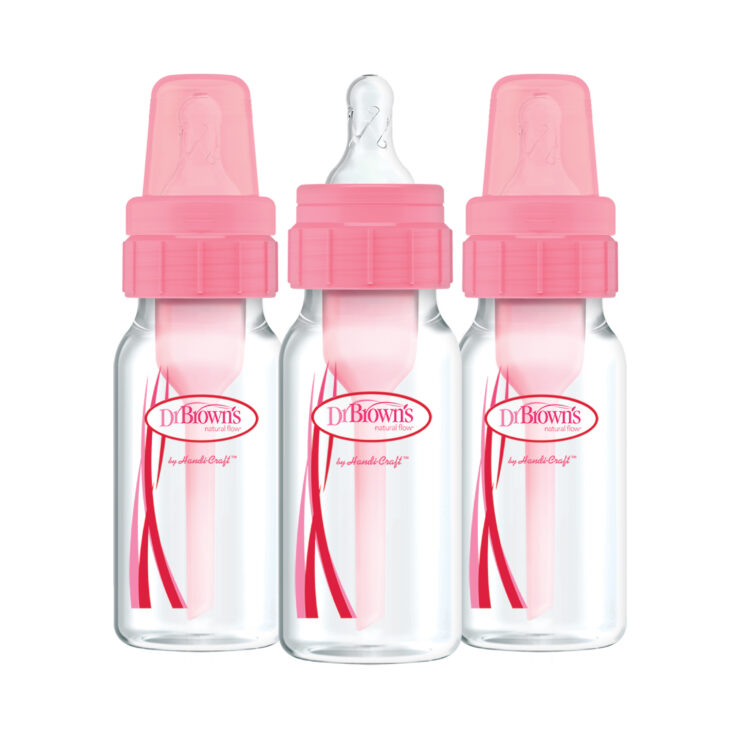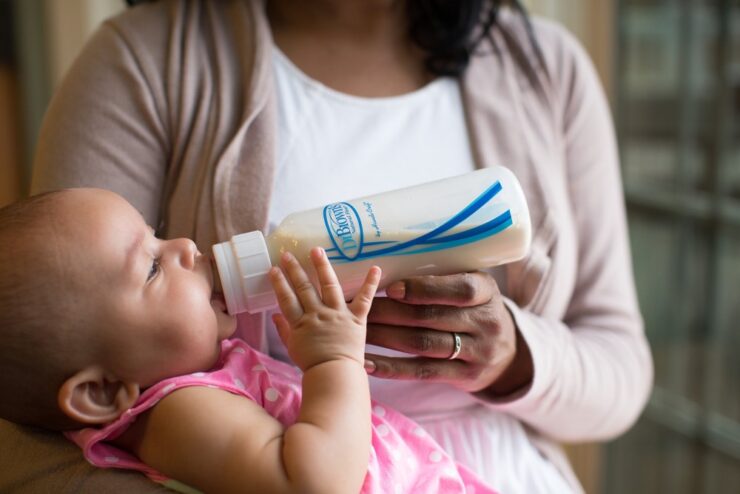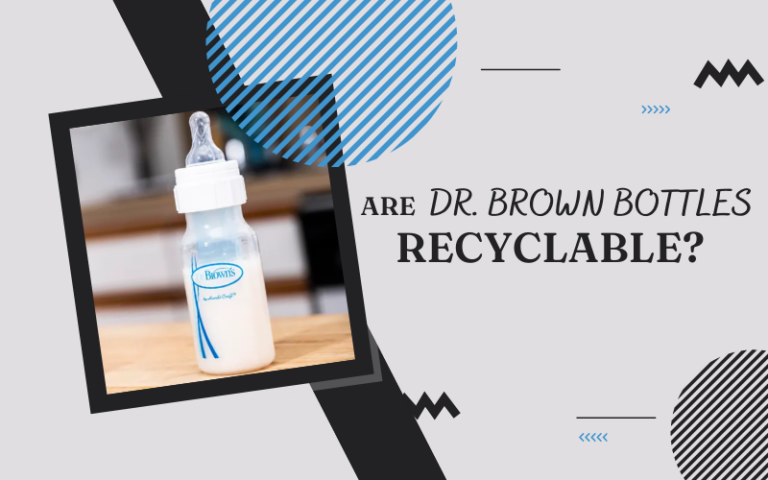That’s the answer that’s not too far from any parent who owns this brand of baby bottles. Because of their reputable and popularity, most people are familiar with them.
So, whether you’re trying to determine their suitability before buying, this article is for you. Or if you just want to confirm your suspicion on the old ones you have, this article is also for you.
After conducting preliminary research and going through numerous comments from users, it’s clear this problem is popular among parents.
Most people have old bottles they want to get rid of. However, they don’t want to just thrash it. There should be a better use for the bottles than that. If you fall into this category, keep reading.
Dr. Browns Baby Bottles are BPA-Free
Unless you have very, very old bottles, Dr. Brown’s bottles are actually made of BPA-free polypropylene plastic or BPA-free borosilicate glass.
All the other parts like the nipple, cap, vent insert, etc., are also all made from BPA-free materials. This is essential in understanding what their products are made of, which provides self-assurance for parents and caregivers.
Dr. Brown is one of the most reputable brands in the industry and is very much committed to quality. This is why most of their products are produced and packaged in the United States, which denote high quality.
They also have some products are manufactured in Germany and China. Usually, you’ll find all this information on the product’s packaging.
So, if you don’t like buying products produced outside of the US, you can check and don’t buy those from outside.
Therefore, this article will help you answer two questions. If you already have the bottles and you want to know if they are recyclable, keep reading.
Also, if you just want the answer before making a purchase, you’ll also find this article helpful.
Are Dr. Brown Bottles Recyclable?
Yes, all Dr. Brown bottles are recyclable. If you have very old bottles without recycling codes on them, it might be difficult getting them submitted for recycling.
However, if there is a recycle code on them, you can easily find the government organization that takes care of bottle recycling in your country.
This site list out some of the recycling companies in the US. The Association of Plastic Recyclers can also be of help.
What if you can’t get these to recycle your bottles or there is too much hassle involved? Then you can do it your own way.
So how should you recycle your old Dr. Brown bottles?
Five Cool Ideas on How to Reuse Your Dr. Brown Bottles

First of all, most baby bottles are recyclable. Or in other words, reusable, including Dr. Brown’s bottles. In fact, there are a lot of ideas you can implement when it comes to recycling these bottles.
Here are some of the brilliant ways of recycling Dr. Brown’s baby bottles:
1. Donate them
One of the first things you can do is to donate them to charities, as long as they are BPA-free. Surprisingly, there are so many charities that’ll welcome this.
Fortunately, you’ll find many in your locality or close to where you’re staying. Many of them often need bottles for underprivileged babies and they include international organizations, local charities, and hospitals.
2. Make them into a gift
Another great option is to turn them into a gift. If you have a friend/family that just put to bed or is expecting, you can wrap the bottle and include it in a baby shower.
You don’t necessarily need to buy new ones for them, as long as it’s in good shape. Most people will appreciate you for that.
3. Use as a baby toy
You’d be surprised how many babies don’t mind using their bottle as a toy. In fact, if your baby is still growing, you can redesign the bottle to make it more attractive and include it in their toy repository.
4. Use it to measure liquid
This is another genius way of reusing your old baby bottles without spending a dim.
As someone remarked in a forum, you can use your baby bottle for adding a quarter cup of milk/water to a recipe using the ounce measurement on the baby bottle.
Since there isn’t any difference, an ounce is an ounce, you’ll quickly find a good use for the bottle.
5. Use as filler
This is even more clever. If you’re hiking or as a mom on the go, you could make great use of the bottle. You can fill it with trail mix/scroggin, slot it into the diaper bag, and use them for an on-the-go snack.
I Can’t Recycle My Dr. Brown Bottles, What Can I Do?

Imagine you have a dozen Dr. Brown baby bottles in your home right now. You need to replace them. But not one of them has a recycling code on them (usually located at the bottom).
So you’re wondering if it’s okay to just throw them in the bin or submit them for recycling.
The first thing to look at is if the bottles are actually BPA-free. If they are not, then it’s going to be almost useless. This is because you can’t keep it for a future bab or gift it out to friends and families.
In this case, you can take them to the Babies R Us store in your locality. They may be collecting this kind of bottle and might even replace them for the BPA-free ones so you can use it again for your baby or as a gift.
From research, some people stated that there was a demand for receipt or the original packaging. So not having any of those might make the matter worse.
Final Note
One problem with recycling these kinds of bottles is that you need to know the grade of the plastic you want to dispose of. It’s got to be those that are recyclable.
In the event that the bottles are not marked, you can then try submitting them. From research, it seems that bottles that aren’t BPA-free are graded #7, which fall under the plastic that can be recycled.
Even if your Dr. Brown bottles are not BPA-free, you should be able to use one of the ideas above.
Finally, are Dr. Brown bottles recyclable? Yes, and hope you enjoy this article!
Don’t miss our reviews:

